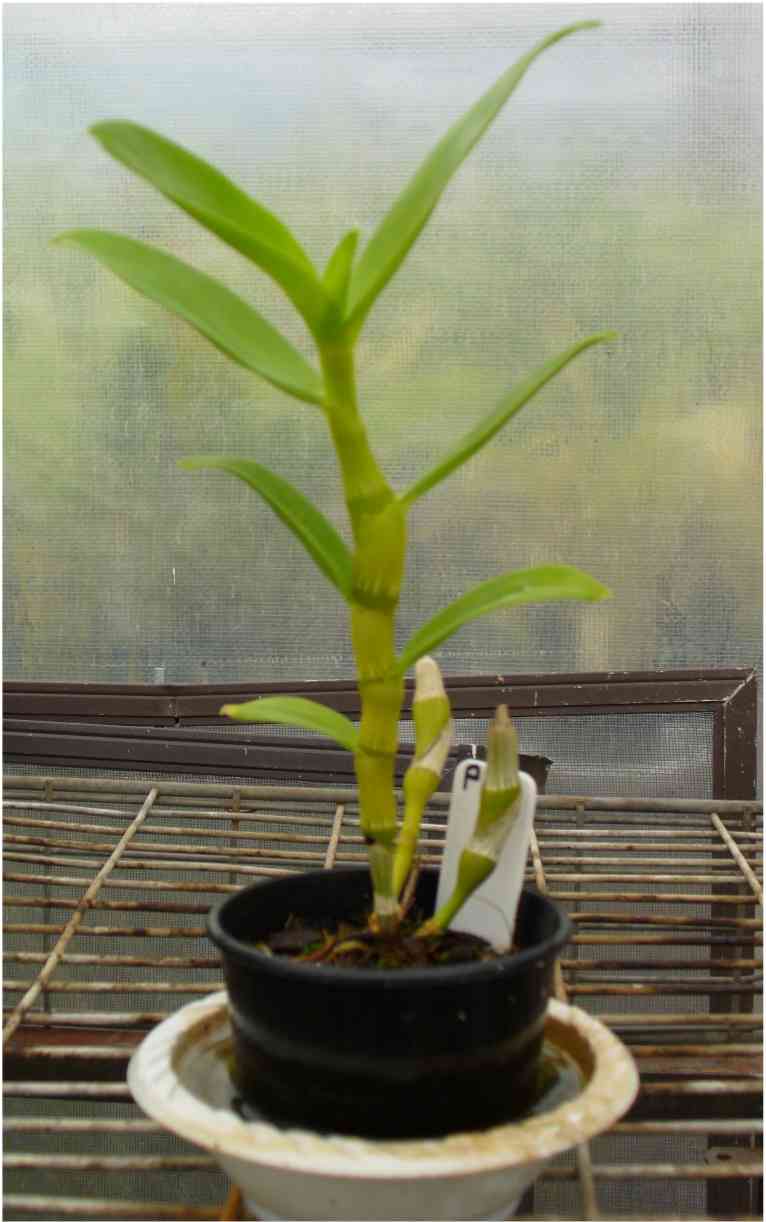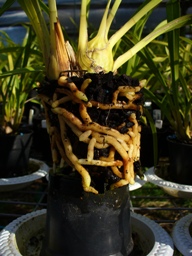When I started growing orchids, the advice from the more experienced growers was "Never leave an orchid sitting in a saucer" Times have changed. What follows is a summary of what I am doing along with my thoughts. |
||
Cymbidiums. My cymbidiums are grown under 70% white shade cloth and are sitting in approximately 2cm of water all year round. I water with the same frequency as before I used the saucers regardless of whether or not there is water in the saucers. If the saucers are empty then watering is probably overdue. Don't be tempted to say "There's water in the saucer so I don't need to water" as this will lead to the orchid sitting in stale water which is probably the reason for the long held beliefs about not leaving orchids in saucers. Secondly, I never put an orchid into a saucer unless I repot it first. I use 10mm bark with Canunda shell to help to counteract any acid buildup. (Other growers apply a sprinkling of lime on a regular basis.) The question has been raised...Should I remove the saucers during winter?... One experienced grower feels that the cymbidiums take up to 6 weeks to get used to the change to or from saucers. |
|
|
Softcane dendrobiums My softcanes are grown in the same disposable picnic plates during the summer months. Once the canes are made up, around the end of April, they come out of the saucers so they can dry out for the winter. During this time they need full sun, very limited water, and around a month of night temperatures less than 10degrees to initiate flowering. Watering will be slowly resumed once flower buds become evident. In my case they will go back into saucers after flowering when the new growths commence. |
 |
|
Odontoglossums and Masdevallias I generally grow these in sphagnum moss. (Using these lids is also a good way to re-wet sphagnum if it has dried out.) Australian Natives I grow these in bark and use the same lids during the warmer months. The small amount of water held in the lid after watering helps to keep the bark moist for 1-2 extra days during the hot weather. Once the cane is made up I remove the lid to let the plant dry out a little. |
||
Some other genera I have tried in saucers are lycaste, bifrenaria, oncidium, zygopetalum and some phragmipedilums. (Some don't like it. I'm still experimenting) Some I would not put in saucers include cattleya alliance which need to be able to dry out a bit between waterings and Australian native terrestrials.
|
|
|
|
||
GO TO index for MORE ORCHID CULTURE INFO |
||

